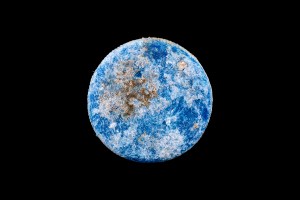Filmmaker literally deconstructs classic, avant-garde movies
Radcliffe fellow explores art of unseen
For filmmakers, the visual image is vital. But movie producer Rebecca Baron is more interested in what you can’t see.
A group of recent works, created by Baron and her collaborator Doug Goodwin, and sound designer Ernst Karel, assistant director of the Film Study Center at Harvard University, explore the art that lies behind what the naked eye can’t quite capture. Like a dog whistle, she explained last week to a crowd at the Radcliffe Gymnasium, with a pitch that one knows is there but is inaudible, the team’s work reaches beyond the traditionally perceptible image to uncover a dramatic, hidden visual realm.
Baron’s experimental and documentary film work often examines the ways in which history is “constructed.” Her film “ok bye bye,” studies the aftereffects of the Vietnam War while her poignant documentary “How Little We Know of Our Neighbors” lends a historical perspective to today’s issues of privacy and surveillance through an exploration of the use of cameras in public space. Similarly, Baron explores the ways in which films themselves are constructed — and then goes on to do some deconstructing.
While at Radcliffe, Baron (currently on leave from the California Institute of the Arts where she teaches documentary and experimental film) is working on a cycle of 16 mm films called “What Nature Tells Us.” The film cycle focuses, as the Radcliffe Web site puts it, “on the vehicles, instruments, and methods of spatial, temporal, and cultural navigation” as well as the intersection and interchangeability of these various dimensions. Baron and her partners approach their rather heady project, a separate series of films, with a similarly sophisticated methodology.
Using a compression algorithm, a computer formula that shrinks information into smaller packages, making it easier to share and store, the group developed their work based on three films that they downloaded from the Internet. The process included a method by which they periodically interrupted the data streaming from the Web and another method, with which they removed part of the basic information that held the digital format of a particular film together. They created a fourth film by comparing 35 mm film to DVD and examining the difference between each frame in the two separate formats.
Baron said the idea for the project began as they considered the impact of the digital age and its effects on the essence of filmmaking and even the experience of film watching.
“[We] started thinking about that materiality and what it meant for it to become dematerialized and turned into digital bits,” said Baron, who noted that if one were to try and capture a film at its full resolution on a DVD, it would take as many as 400 discs to contain all of the information.
“All that gets compressed into one DVD … [so] we started learning about how compression works.”
The result is a series of films with an eerie, surreal quality that includes blurred images and sliding visuals. Faces are almost but not entirely recognizable, and large sections of the screen are frequently given over to square, pixilated shapes. The effect is not unlike that of looking into a kaleidoscope, where patterns continuously repeat and shift.
“I just wanted to share with you how excited we were when we saw this happen. The images started to melt and slide and there were these very painterly aspects that we hadn’t expected,” said Baron, adding, “There’s a kind of strange relationship between foreground and background that keeps shifting.”
That effect is clearly visible in their deconstructed version of the 1956 Western directed by John Ford called “The Searchers.” Cowboys ride by in a sliding whir, but frequently the background shot is unaltered.
The project takes an interest in the social as well as the aesthetic repercussions of digitization and the growing importance of the Internet. One of the films they chose to work with was the 1943 avant-garde piece “Meshes of the Afternoon,” directed by Maya Deren and Alexander Hammid, a work traditionally shown in limited venues with typically small circulations. With the Internet, such works said Baron, have become easily accessible.
“We were interested in the social aspects of how that functioned,” she said. “To me it feels like kind of a community. … [I wonder] who are these other people who are interested in this obscure media?”
Baron and Goodwin based the third — and most abstract — of the downloaded works on the short 1970 “structural” film by avant-garde director Ernie Gehr “Serene Velocity.” In the Baron/Goodwin version, instead of any recognizable shots on screen, the repeated images reveal what look like a set of roughly drawn blueprints.
Baron acknowledged that the skeletal visuals are the result of the complete removal of the image [and] only “notations of where images should move” are remaining.
For at least one member of the audience, Baron’s deconstruction process made the films even more evocative and emotional.
The audience member noted how the trauma and violence of “The Searchers” appeared much more brutal “than the image that Hollywood would ever allow.”
“I found it really powerful to see that,” she said.
Baron acknowledged that in defamiliarizing something that is familiar, a profound change can occur.
“When you don’t have to follow the narrative or follow the characters, there’s just this sensation that is highlighted.”




